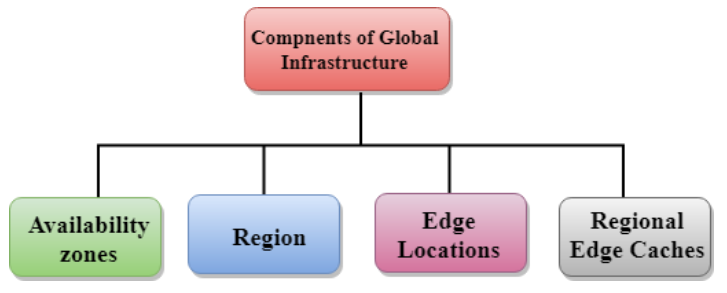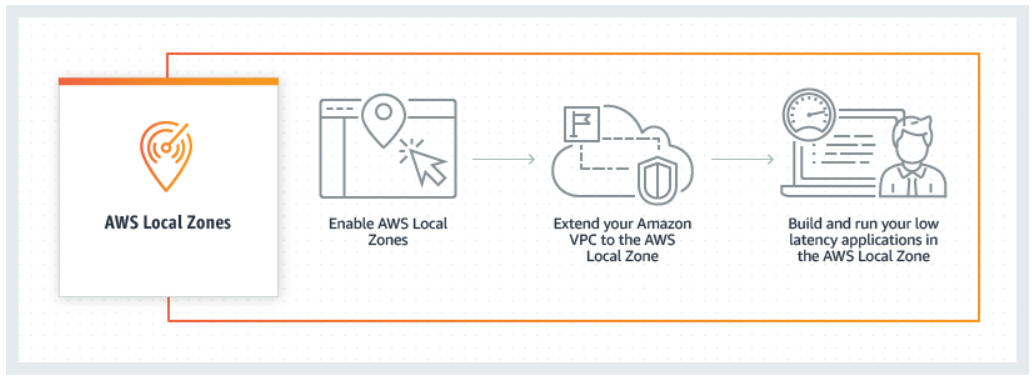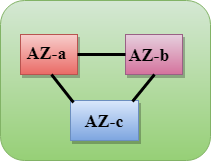All you need to know about AWS Global Infrastructure
 Sankita Mandal
Sankita Mandal
The AWS Cloud infrastructure is mainly built around AWS Regions and Availability Zones, however, it also is simplified into Edge Locations and Regional Edge Caches.

What do AWS Regions consist of?
AWS has a Region concept, a physical location around the world where we cluster data centers. We call each logical data center group an Availability Zone (AZ). Each AWS Region consists of a minimum of three, isolated, and physically separate AZs within a geographic area. Unlike other cloud providers, who often define a region as a single data center, the multiple AZ design of every AWS Region offers advantages for customers.
What do AZs comprise?
An Availability Zone (AZ) is one or more discrete data centers with redundant power, networking, and connectivity in an AWS Region. All AZs in an AWS Region are interconnected with high-bandwidth, low-latency networking, over fully redundant, dedicated metro fiber providing high-throughput, low-latency networking between AZs. All traffic between AZs is encrypted.
The network performance is sufficient to accomplish synchronous replication between AZs. AZs make partitioning applications for high availability easy. If an application is partitioned across AZs, companies are better isolated and protected from issues such as power outages, lightning strikes, tornadoes, earthquakes, and more. AZs are physically separated by a meaningful distance, many kilometers, from any other AZ, although all are within 100 km (60 miles) of each other.
Why does AWS provide Multiple Availability Zones?
Each AZ has independent power, cooling, and physical security and is connected via redundant, ultra-low-latency networks. AWS customers focused on high availability can design their applications to run in multiple AZs to achieve even greater fault tolerance. AWS infrastructure Regions meet the most increased security, compliance, and data protection levels.
Availability Zones consist of one or more discrete data centers, each with redundant power, networking, and connectivity, housed in separate facilities. These Availability Zones offer you the ability to operate production applications and databases that are more highly available, fault-tolerant, and scalable than would be possible from a single data center.

AWS Global Infrastructure Map
The AWS Cloud spans 99 Availability Zones within 31 geographic regions around the world, with announced plans for 12 more Availability Zones and 4 more AWS Regions in Canada, Israel, New Zealand, and Thailand.
You can browse through the real-time Infrastructure map at: https://aws.amazon.com/about-aws/global-infrastructure/

AWS Local Zones
AWS Local Zones are a type of infrastructure deployment that places computing, storage, database, and other select AWS services close to large populations and industrial centers.
How do AWS Local Zones work?
AWS Local Zones place computing, storage, database, and other select AWS services closer to end-users. With AWS Local Zones, you can easily run highly-demanding applications that require single-digit millisecond latencies for your end-users such as media & entertainment content creation, real-time gaming, reservoir simulations, electronic design automation, and machine learning.
Each AWS Local Zone location is an extension of an AWS Region where you can run your latency-sensitive applications using AWS services such as Amazon Elastic Compute Cloud, Amazon Virtual Private Cloud, Amazon Elastic Block Store, Amazon File Storage, and Amazon Elastic Load Balancing in geographic proximity to end-users. AWS Local Zones provide a high-bandwidth, secure connection between local workloads and those running in the AWS Region, allowing you to seamlessly connect to the full range of in-region services through the same APIs and toolsets.

Use Cases of AWS Local Zones
1) Run low-latency applications at the edge -
Build and deploy applications close to end users to enable real-time gaming, live streaming, augmented and virtual reality (AR/VR), virtual workstations, and more.
2) Simplify Hybrid Cloud migrations-
Migrate your applications to a nearby AWS Local Zone, while still meeting the low-latency requirements of hybrid deployment.
3) Meet stringent Data Residency Requirements-
Comply with state and local data residency requirements in sectors such as healthcare, financial services, gaming, and government.

Below is a summary of points you need to keep in mind for answering questions asked in AWS CCP and AWS SAA certification examinations.
Region
A region is a geographical area. Each region consists of 2 more availability zones.
A region is a collection of data centers that are completely isolated from other regions.
A region consists of more than two availability zones connected to each other through links.
eg: Below is an AWS Region comprising three AZs

- Availability zones are connected through redundant and isolated metro fibers.
Availability zone as a Data Center
An availability zone is a facility that can be somewhere in a country or in a city. Inside this facility, i.e., Data Centre, we can have multiple servers, switches, load balancing, and firewalls. The things which interact with the cloud sit inside the data centers.
An availability zone can be several data centers, but if they are close together, they are counted as 1 availability zone.
Edge Locations
Edge locations are the endpoints for AWS used for caching content.
Edge locations consist of CloudFront, Amazon's Content Delivery Network (CDN).
Edge locations are more than regions. Currently, there are over 150 edge locations.
An edge location is not a region but a small location that AWS has. It is used for caching the content.
Edge locations are mainly located in most major cities to distribute the content to end users with reduced latency.
For example, if some user accesses your website from Singapore; then this request would be redirected to the edge location closest to Singapore where cached data can be read.
Regional Edge Cache
AWS announced a new type of edge location in November 2016, known as a Regional Edge Cache.
Regional Edge cache lies between CloudFront Origin servers and the edge locations.
A regional edge cache has a large cache than an individual edge location.
Data is removed from the cache at the edge location while the data is retained at the Regional Edge Caches.
When the user requests the data, the data is no longer available at the edge location. Therefore, the edge location retrieves the cached data from the Regional edge cache instead of the Origin servers with high latency. Availability zone as a Data Center
An availability zone is a facility that can be somewhere in a country or in a city. Inside this facility, i.e., Data Centre, we can have multiple servers, switches, load balancing, and firewalls. The things which interact with the cloud sit inside the data centers.
An availability zone can be several data centers, but if they are close together, they are counted as 1 availability zone.
That's all for this article, for more such AWS and cloud-related content in the series, please do follow: https://blog.womenincloudnative.com/
Subscribe to my newsletter
Read articles from Sankita Mandal directly inside your inbox. Subscribe to the newsletter, and don't miss out.
Written by

Sankita Mandal
Sankita Mandal
Love working and talking about Tech, including Software Development, Cloud Computing and Cybersecurity. Semi-skilled at blogging and baking cakes!!